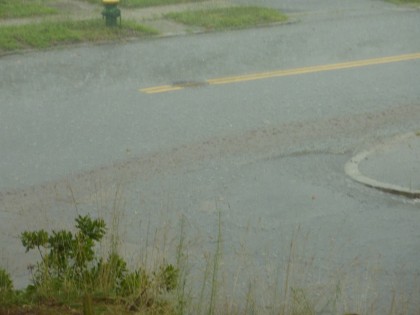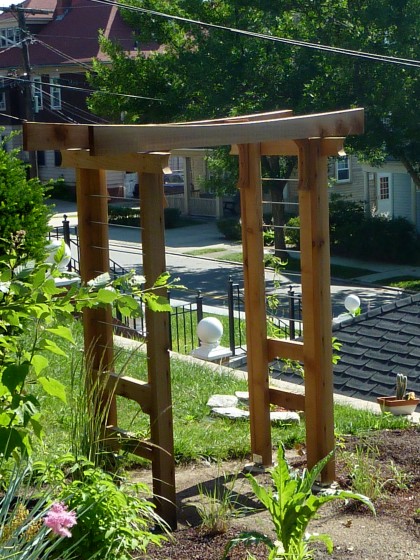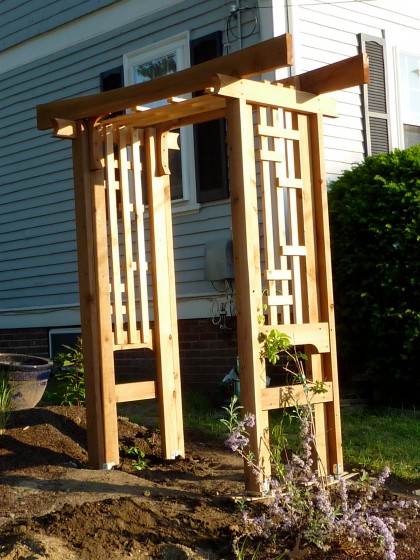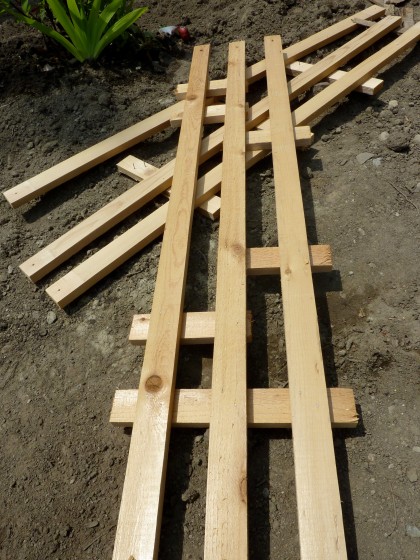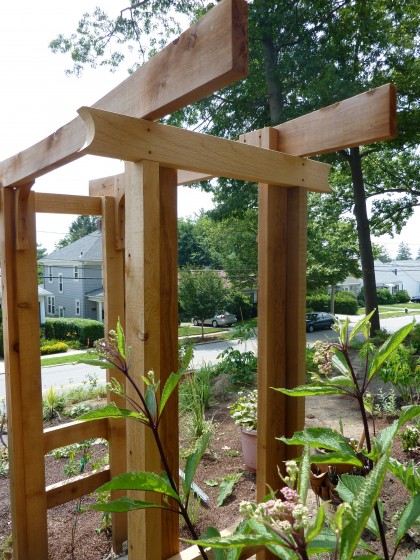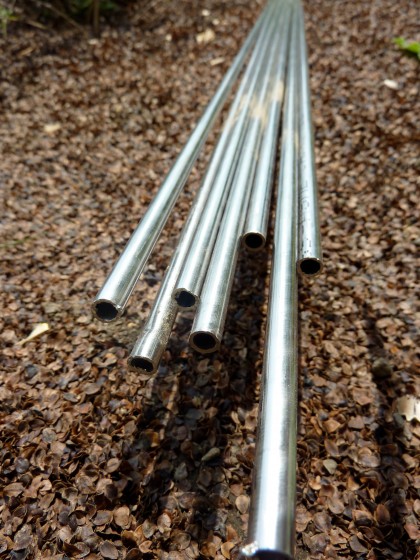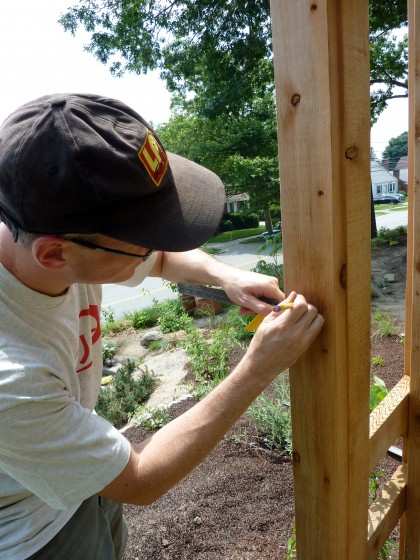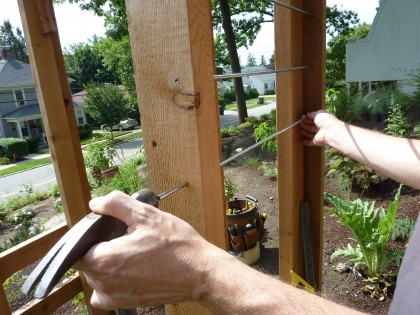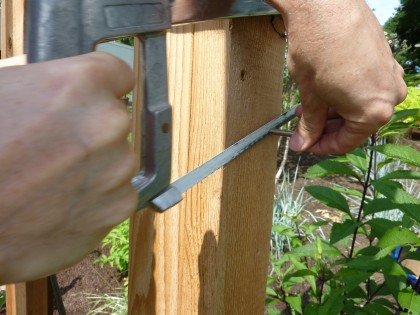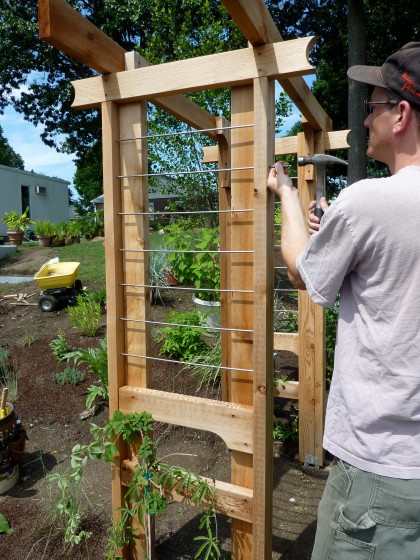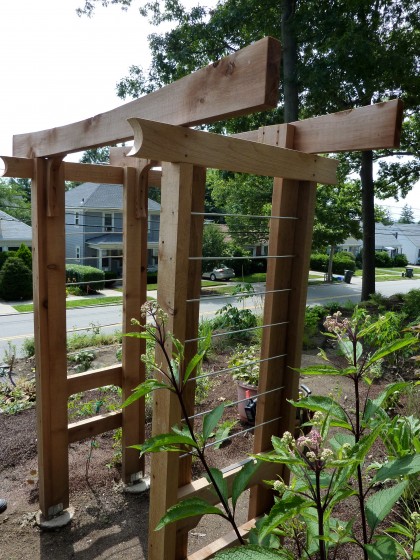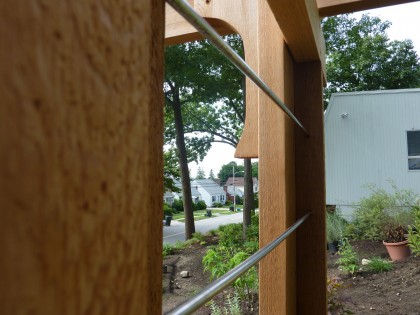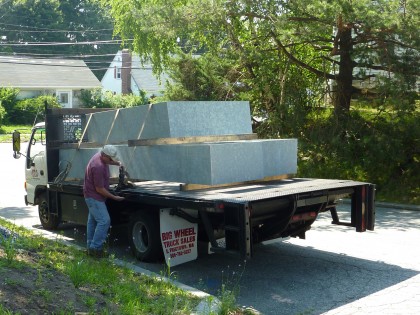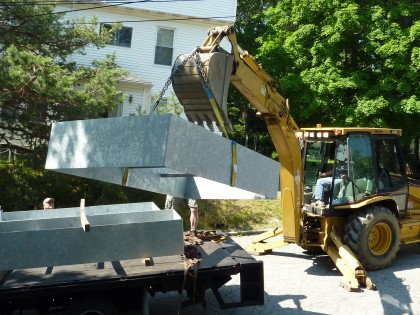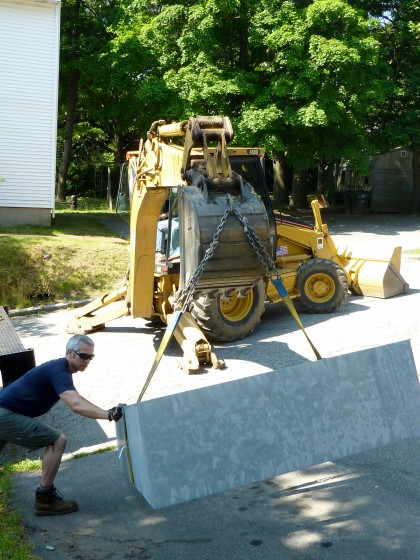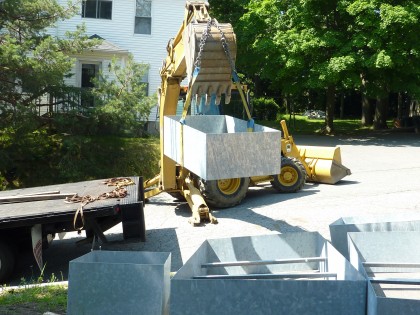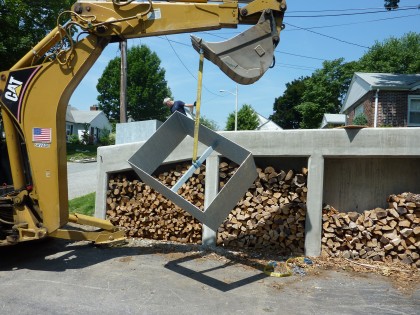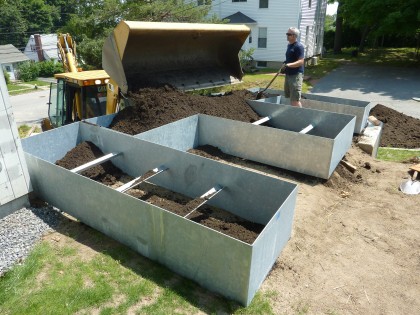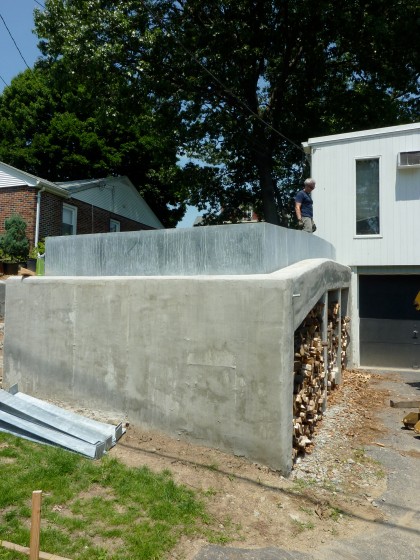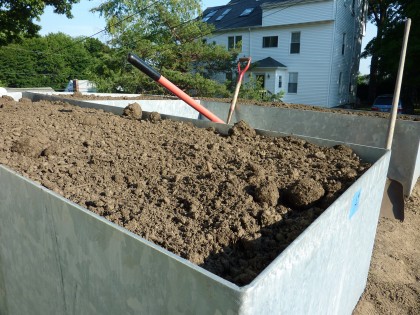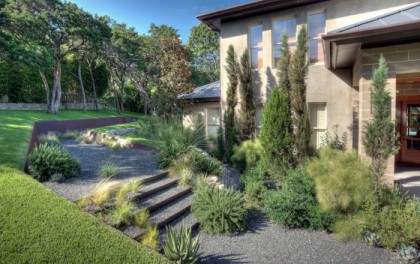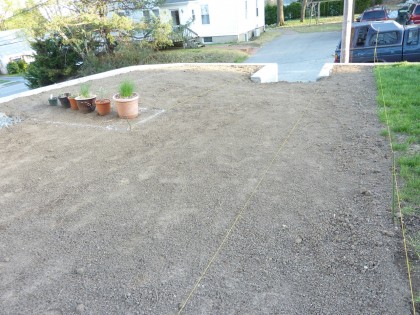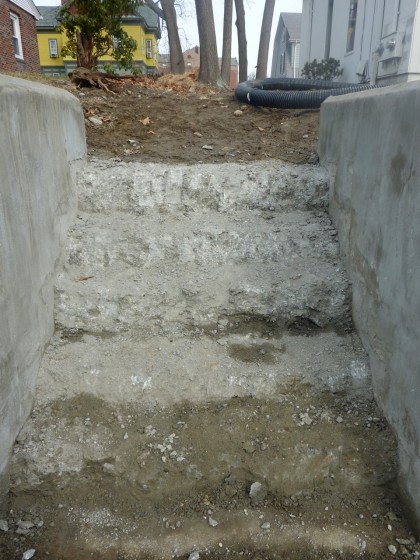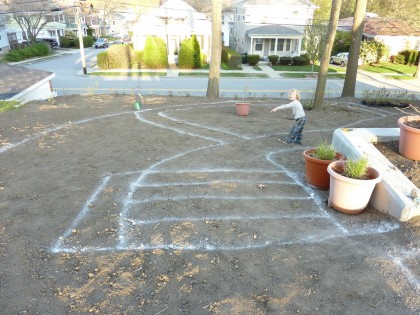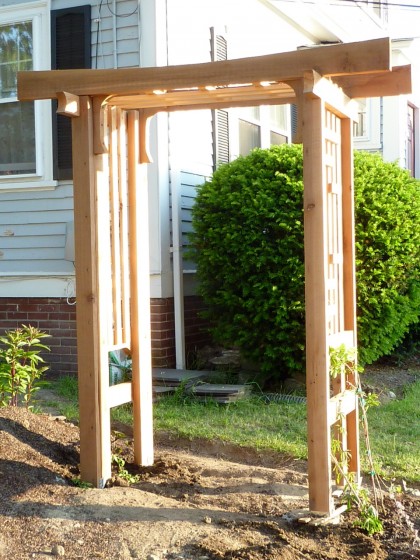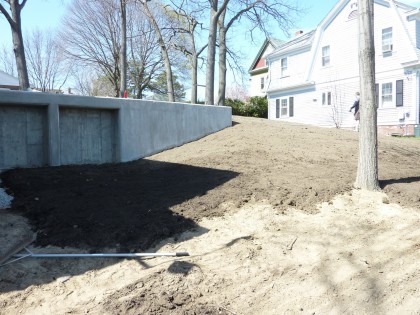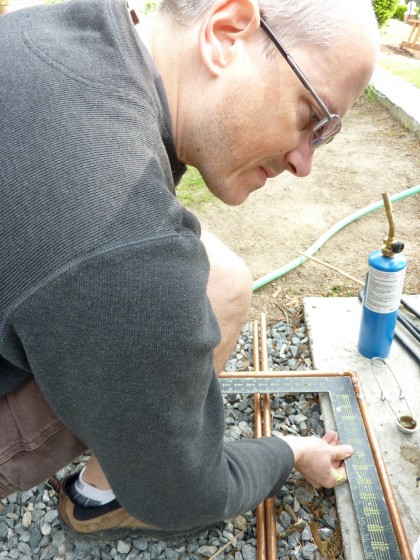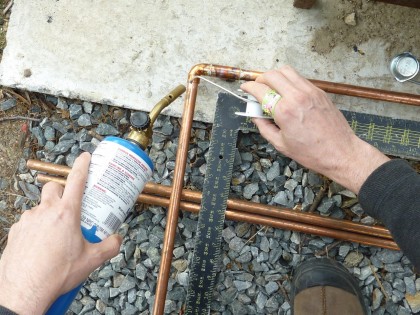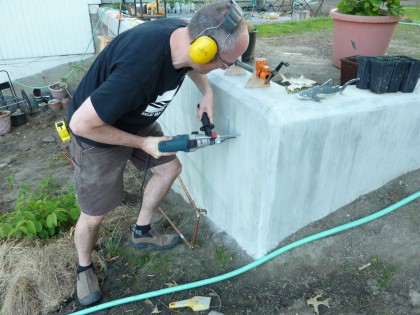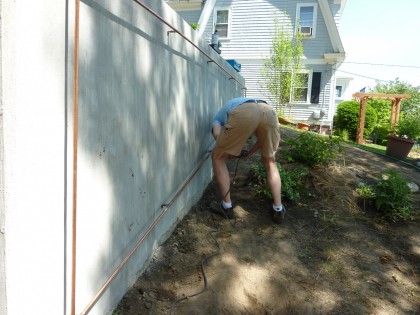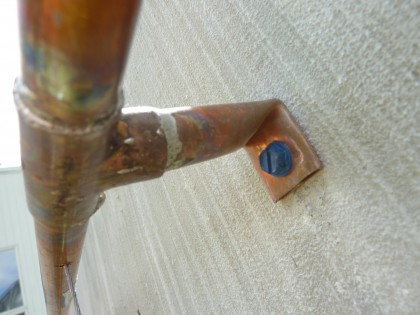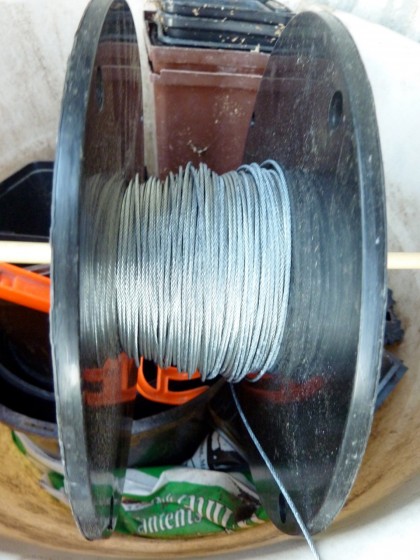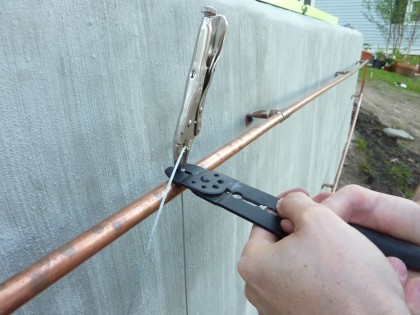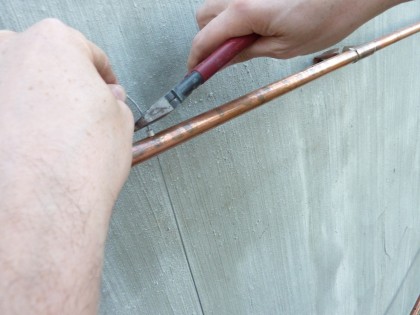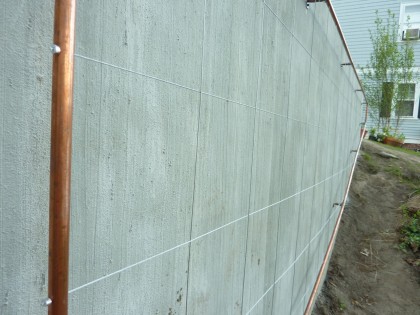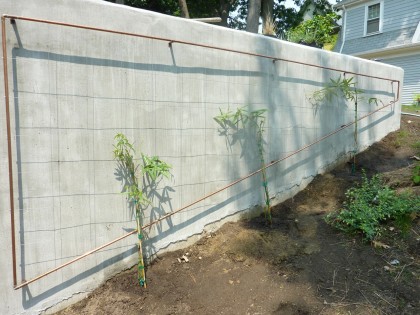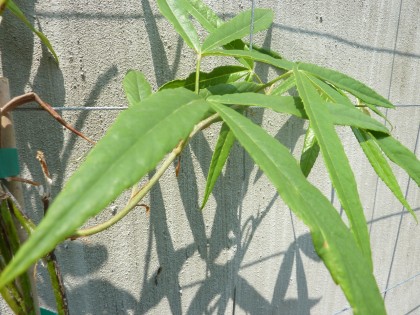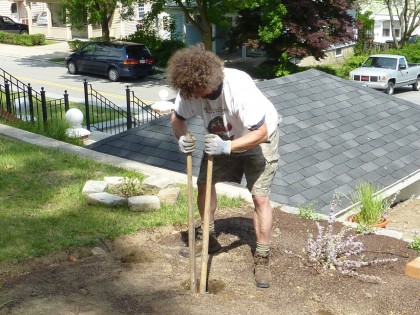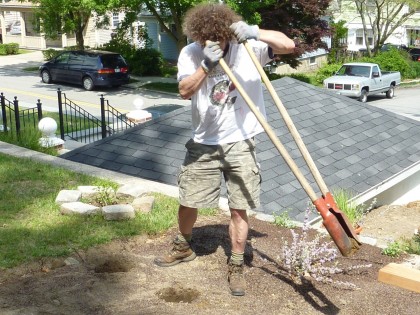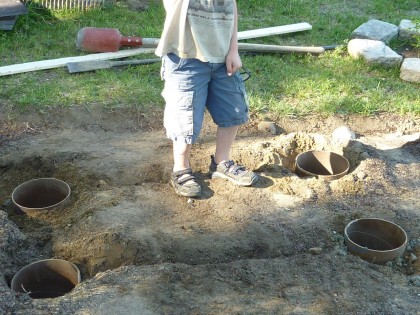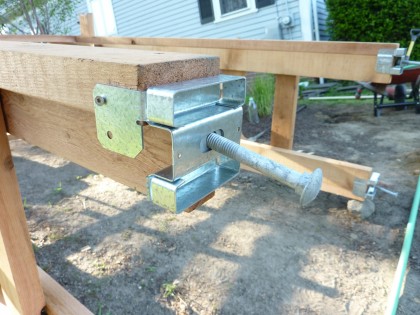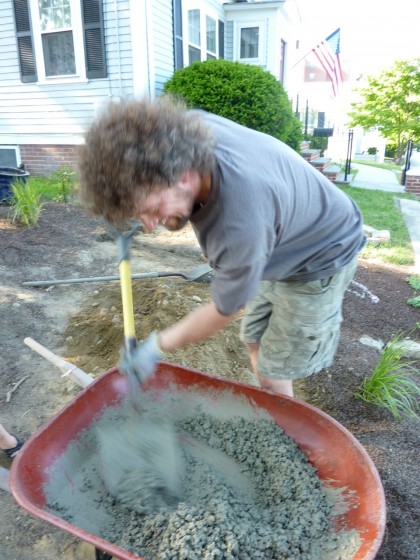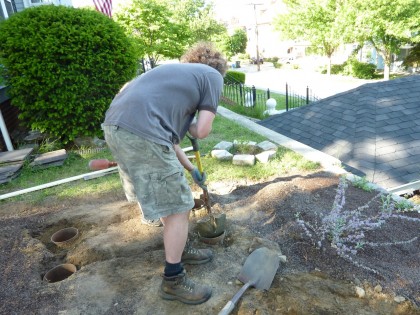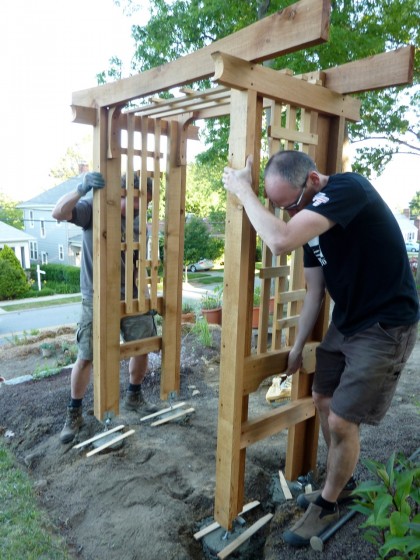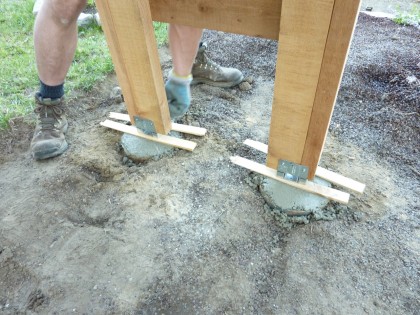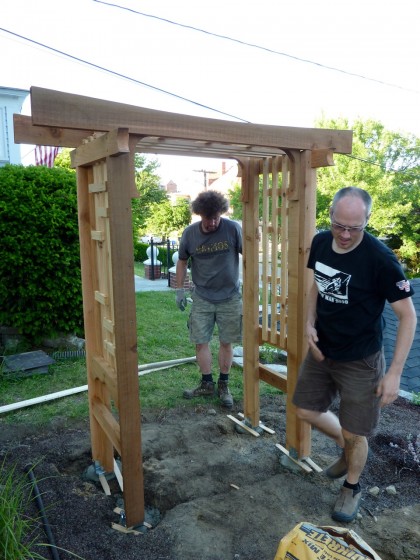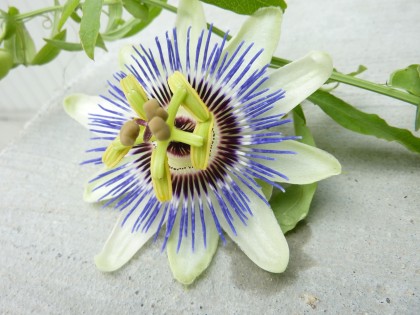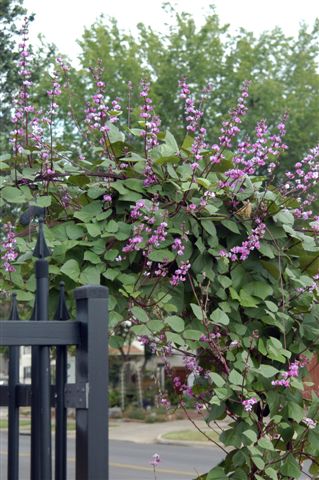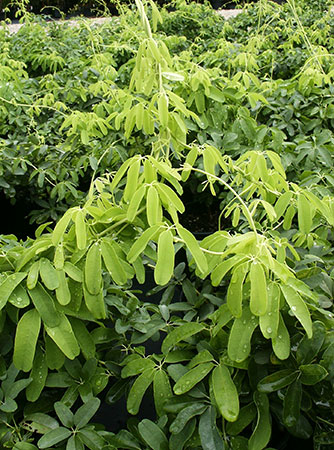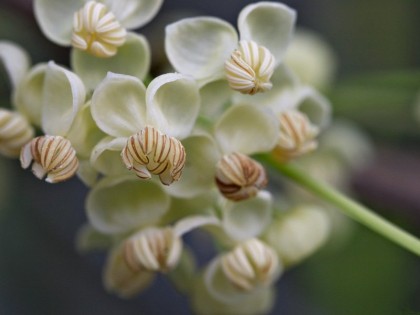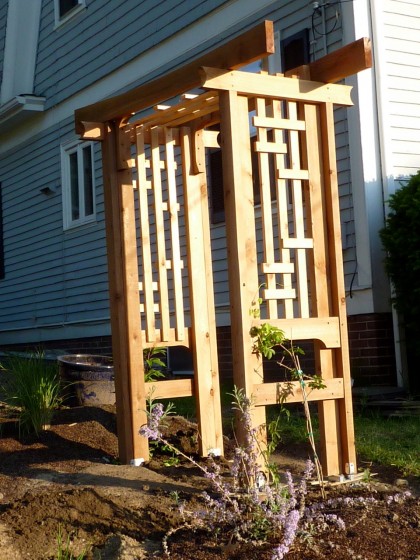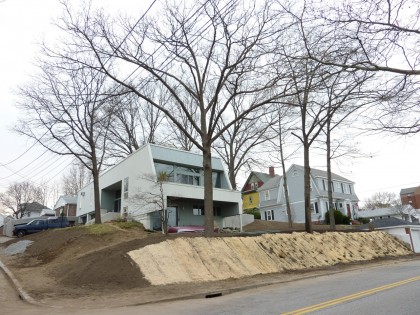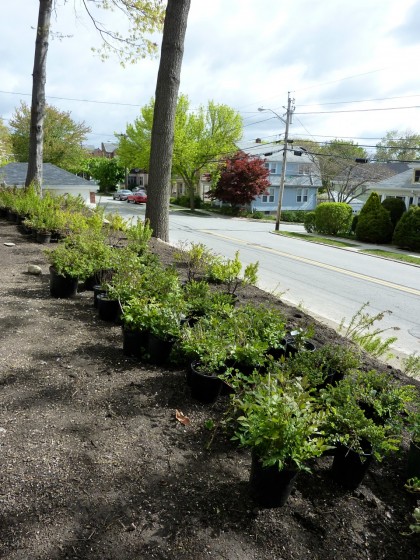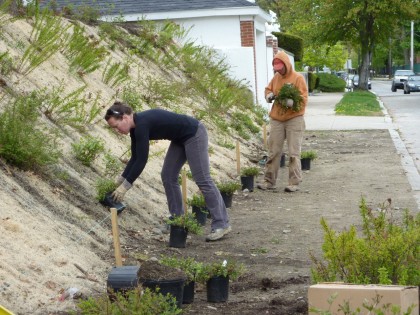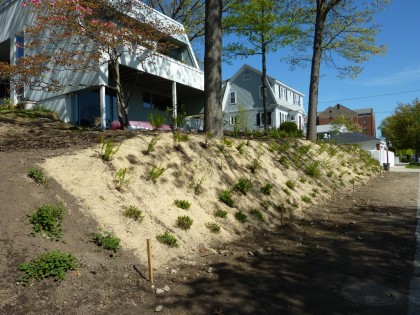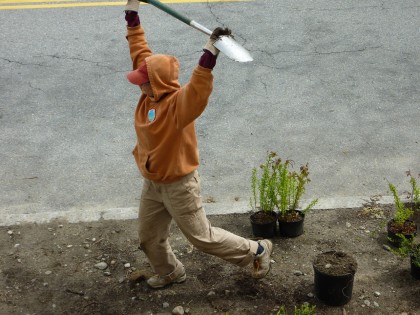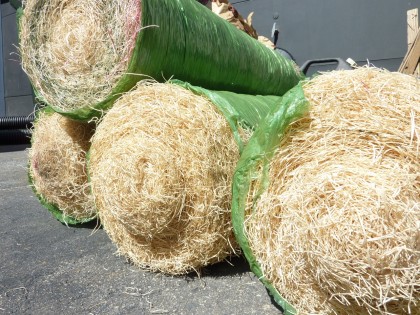
So the Curlex has been in place for a few weeks now. Has it kept our slope from washing away? I am pleased to report that yes, so far, it has successfully b**ch-slapped our erosion issues.
Here’s where we were on March 30 after all that flooding…
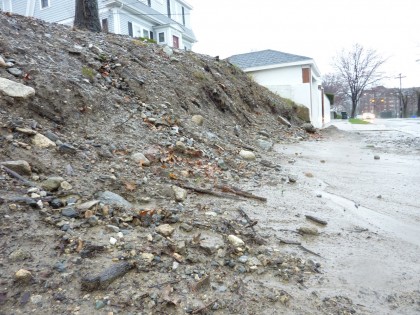
More soil was added during the first week of April…
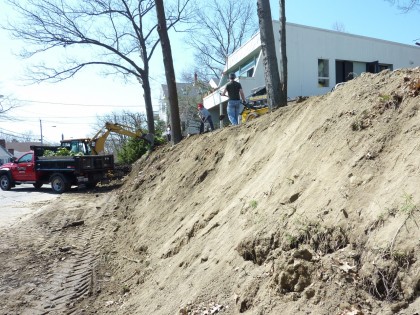
Then the Curlex erosion control matting was added and erosion control plants put in the ground…
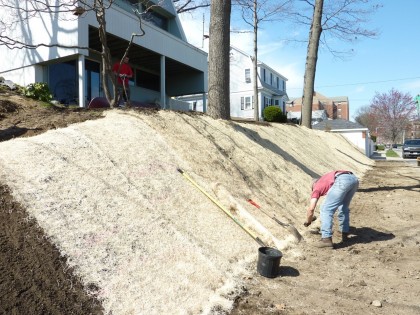
And here’s what it looks a few weeks later after planting and some fairly heavy rains…
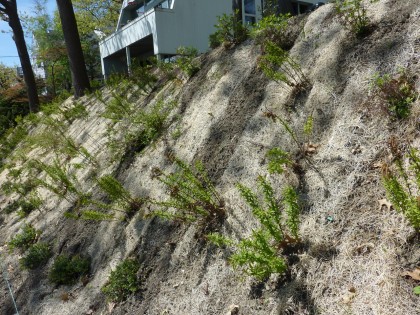
No dirt under the matting has washed out. However, dirt from above (not held by the matting) washed down over it. Just a little. And no wonder, with no grass, very few plants and absolutely no mulch, the water just rushed down the slope and took some of our new topsoil with it…
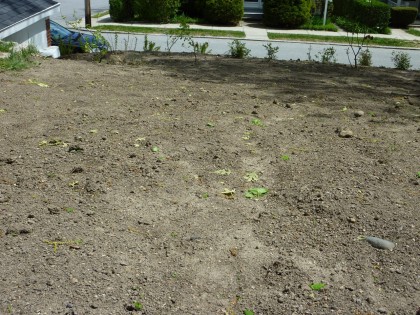
Very happy with the Curlex. I see a few weeds beginning to poke their heads through here and there…
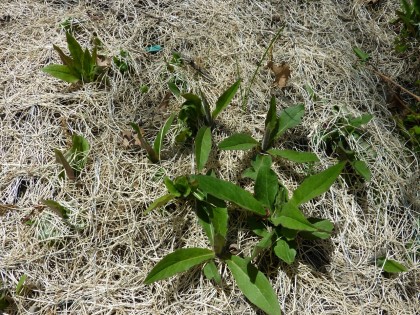
I’ll have to put a stop to that immediately.
Remember the slope between us and our neighbor? The area where we found the lead levels so high and had the soil dug up and carted away?…
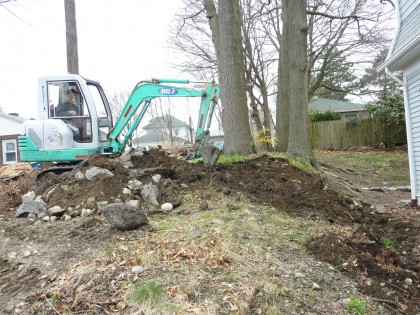
Our lovely neighbors and I thought it would be smart to put down Curlex on this slope, too, before the spring rains washed all the new soil downhill…
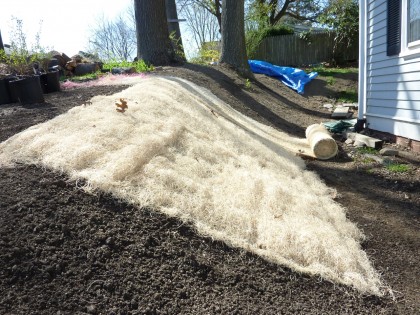
So I took care of that a few weekends ago and then started plugging in some plants sure to hold that slope back…
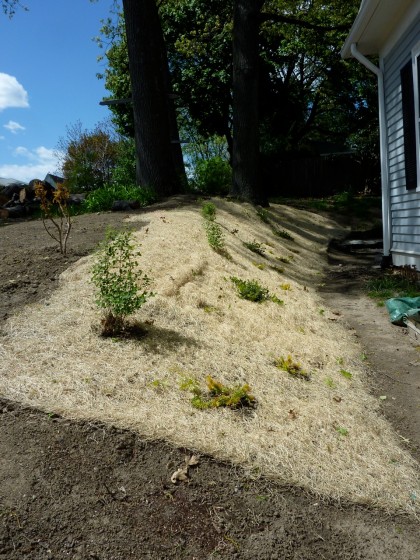
On the front slope, one of the native plants we chose was a Symphoricarpos var. albus (Common Snowberry), which produces big white berries in autumn. I figured that closer to the house it would be nice to have more color, so I chose Symphoricarpus x ‘Kordes’ Amythest (Coralberry)…
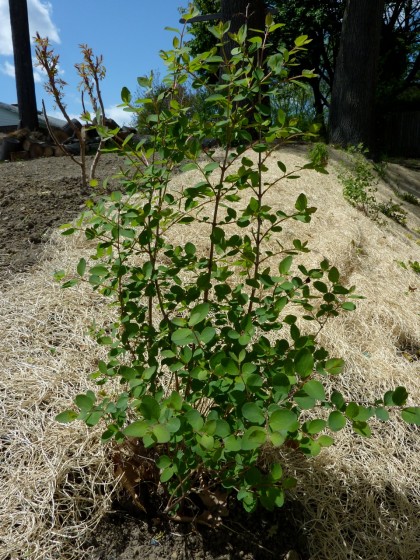
Not a native variety but it produces the most irresistible, insanely colored berries you’ve ever seen — good for the birds…
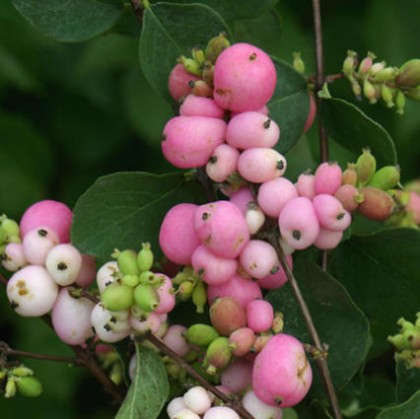
amethyst™ coralberry | colorchoiceplants.com
I also threw in a few native Arctostaphylos uva-ursi ‘Massachussetts’ (bearberry) like we have on the front slope…
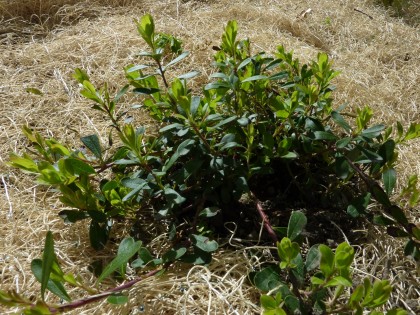
Not only good for erosion control, it also produces bright red berries for the birds in the fall…
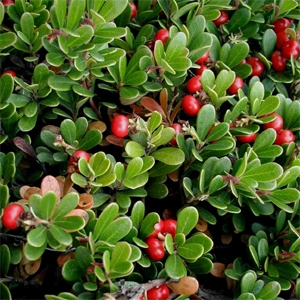
common bearberry | abnativeplants.com
And for good measure, I thought I’d see if some of my brilliant chartreuse Sedum rupestre ‘Angelina’ might work here…
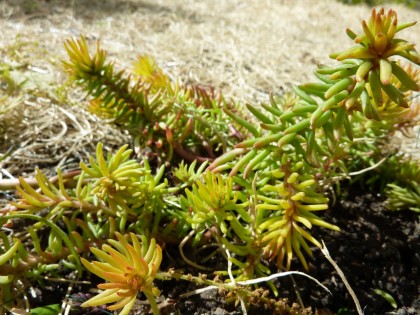
Like all sedums, it’s a tough little stonecrop that covers the ground quickly and doesn’t ask for much care or much water. Flowers for the butterflies in summer. And in the fall, it takes on the most gorgeous pinkish-orange overtones that will look fab with the colorful berries on the plants around it…
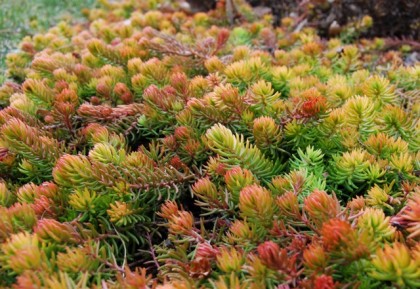
sedum angelina | awaytogarden.com the BEST gardening blog EVER
I’m not done adding plants to the slope…
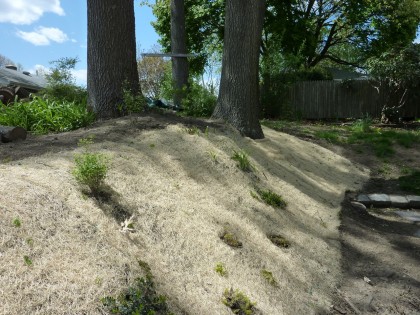
Something ferny with a bluish or silvery cast would make a nice foil to the other shades going on. I’ll report back when I find just the right thing. In that far back corner slope starting at about the oak, I want to plant Rhus aromatica ‘Gro Low’ (Fragrant Sumac). I just discovered it during last week’s trip to the Brooklyn Botanic Garden…
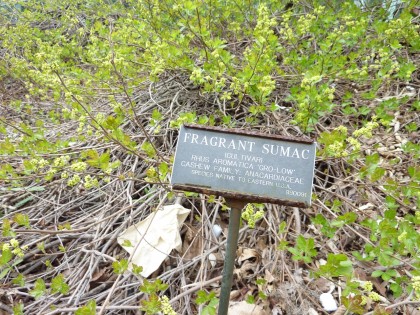
A native great for holding slopes that fills in quickly, is undemanding and drought tolerant, and offers flowers and catkins (food for birds) in the spring. In the fall, it turns flamey red…
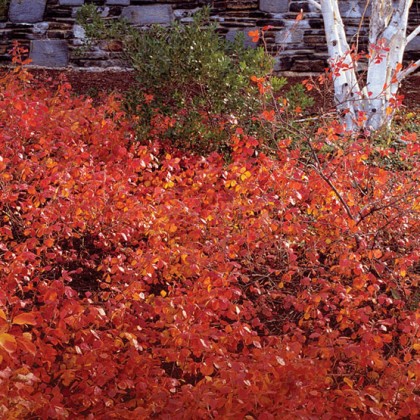
fragrant sumac gro-low | finegardening.com
What a showstopper. I haven’t found a local nursery that carries it, although there’s bound to be one. High Country Gardens has it, for sure. I think I may be able to use it under our dogwood out front as well.
For those of you have slopes like I do, I came across another great article on not-your-typical groundcover alternatives. Worth exploring.
* * * * * *
UPDATE: Okay, I’m having some luck in hunting for slope plants with blue foliage that can handle a mix of sun and shade. There’s Carex Glauca Blue Sedge…
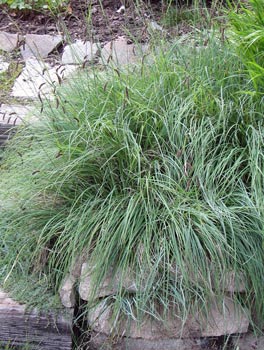
carex glauca (or flacca) blue sedge | bluestem.ca
Or Carex Glauca (also Flacca) Blue Zinger…
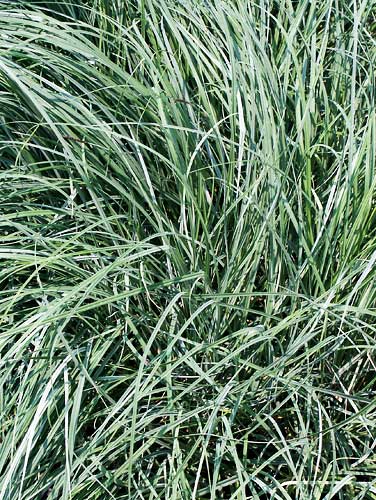
carex glauca blue zinger | plantdelights.com
Ferny, no. But they have a similar upright and then arching manner that make them strong contenders.
